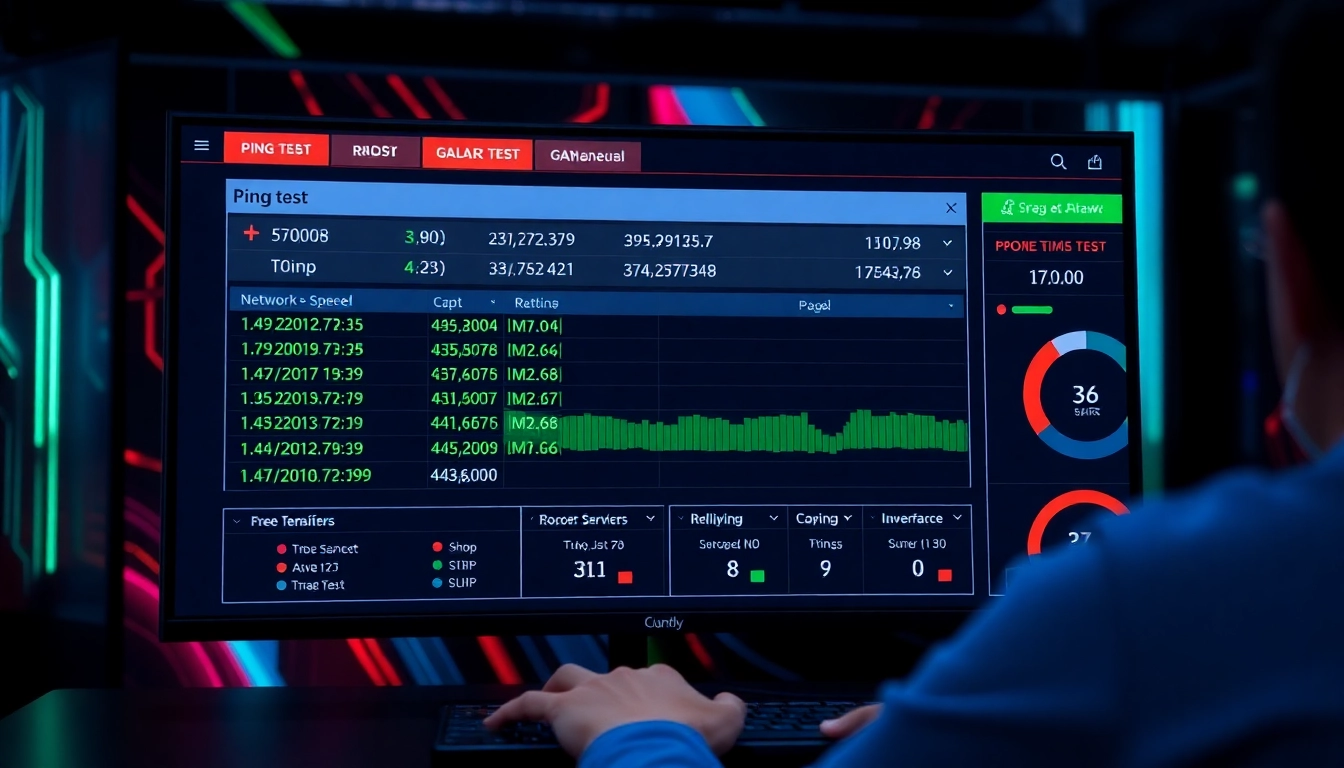Understanding cs teste and Its Importance in Gaming
In the fast-paced world of online gaming, particularly in competitive titles like Counter-Strike, the quality of your network connection can make all the difference between victory and defeat. Many gamers and server administrators utilize tools and tests such as cs teste to assess and optimize their network performance. But what exactly is cs teste, why does it matter, and how can players and IT professionals leverage it to gain a competitive edge? This comprehensive guide delves into the fundamentals of cs teste, explores common challenges, and offers proven strategies to ensure your gameplay is as smooth and responsive as possible.
What is cs teste and why does it matter?
At its core, cs teste refers to a series of network performance tests specifically designed for online gaming environments, particularly for games like Counter-Strike (CS). These tests evaluate numbers such as latency (ping), jitter, packet loss, and bandwidth — key metrics that directly influence gameplay experience. For instance, a high ping can cause delays between player actions and server responses, leading to visible lag, missed shots, and difficulty in precise aiming.
Why does cs teste matter? Because understanding your network’s behavior enables gamers and server administrators to identify bottlenecks, troubleshoot issues, and optimize settings. Reliable testing ensures that your connection aligns with the demands of fast reflex-based games, reducing frustration and improving overall performance. Furthermore, game developers and hosting providers incorporate cs teste methodologies to benchmark servers, ensuring players receive a competitive and fair gaming environment.
Common challenges faced during cs teste testing
Despite its utility, conducting accurate cs teste encounters several obstacles. These include intermittent network fluctuations, inconsistent server responses, and hardware limitations. Typical issues include:
- Unstable connections: Variability in network stability can lead to misleading test results, making it hard to determine true performance.
- High latency spikes: Sudden increases in ping can be misinterpreted as persistent problems, though they might be transient.
- Jitter and packet loss: Variations in delay and lost data packets can drastically impair gameplay, but may not be apparent without proper testing tools.
- Server location and load: Testing from different regions or during peak hours can skew results, emphasizing the need for standardized testing conditions.
Overcoming these challenges requires careful planning, consistent testing practices, and the use of robust tools to ensure data reliability.
How latency impacts gameplay and user experience
Latency, often measured by ping, is the delay between a player’s action and the server’s response. In gaming, latency directly correlates with responsiveness. A ping below 30ms is generally considered excellent, enabling seamless interaction, while pings above 100ms can cause noticeable lag.
High latency leads to issues such as:
- Delayed movement and shooting: Every action feels sluggish, reducing accuracy and reaction speed.
- Increased jitter and inconsistencies: Unpredictable delays cause erratic gameplay, affecting strategies.
- Decreased competitiveness: In tournaments or ranked matches, even milliseconds matter, making latency testing essential for players seeking to optimize.
Therefore, understanding and minimizing latency through comprehensive cs teste practices is vital for delivering a smooth gaming experience and maintaining competitive advantage.
Effective Techniques for Conducting Accurate cs teste Tests
Selecting the right tools and software for cs teste
Choosing appropriate tools is fundamental to obtaining trustworthy data. Some of the most effective software options include:
- Ping test tools: For quick assessments, tools like PingPlotter or Speedtest.net provide immediate latency and jitter metrics.
- Dedicated gaming latency testers: Services like Counter-Strike ping testers allow precise measurement tailored for gaming scenarios.
- Server-side monitoring: Using server management panels that track network performance over time helps identify persistent issues.
When selecting tools, prioritize real-time data, accuracy, and the ability to log performance metrics for historical analysis.
Step-by-step guide to perform reliable ping and latency tests
- Prepare your network: Close unnecessary applications that consume bandwidth and ensure your connection is stable.
- Select testing times: Conduct tests during peak and off-peak hours to understand variability.
- Identify testing servers: Use geographically close servers or those dedicated for gaming tests.
- Run multiple tests: Perform at least 10 consecutive pings to gather average, minimum, and maximum latency data.
- Record jitter and packet loss: Use tools that also measure these metrics, as they are crucial for game responsiveness.
- Analyze results: Look for consistent low latency and minimal jitter. Identify patterns correlating to network issues.
Interpreting test results to improve server performance
Once data is collected, interpret it to pinpoint issues:
- High ping (>100ms): Indicates possible network congestion or long physical distances from server.
- High jitter: Suggests unstable connections, requiring network stability improvements.
- Packet loss: Signals unreliable data transmission, often addressed by hardware upgrades or changing ISPs.
Use these insights to adjust your network setup or choose better hosting options, thereby enhancing your cs teste results and gameplay experience.
Optimizing Network Settings for Better cs teste Results
Configuring router and firewall settings for gaming
Proper router configuration is fundamental. Recommendations include:
- Enabling Quality of Service (QoS) to prioritize gaming traffic.
- Opening specific ports used by your game to reduce latency and packet loss.
- Updating router firmware for better stability and performance.
Additionally, ensuring your firewall allows game data without overly restrictive rules helps prevent unnecessary delays.
Using VPNs and other connection enhancements
While VPNs can sometimes increase latency, when used strategically, they can improve connection stability by routing through optimized servers, especially in regions with poor ISP infrastructure. Consider choosing VPN providers specialized in gaming or low-latency connections.
Best practices for minimizing lag and jitter during tests
- Use wired Ethernet connections instead of Wi-Fi to reduce interference.
- Avoid bandwidth-heavy activities during testing.
- Test during different times to identify optimal periods.
- Consider upgrading your internet plan for higher bandwidth and lower latency.
Advanced Strategies and Tips for Professional Players
Implementing real-time monitoring for cs teste
Advanced gamers and teams deploy network monitoring tools that track performance during actual gameplay. This allows real-time adjustments, such as switching servers or activating network optimizations dynamically.
Tools for tracking network performance over time
Using tools like Nagios, PRTG Network Monitor, or custom scripts helps maintain an ongoing record of network health. Analyzing trends over days or weeks can guide long-term improvements.
Case studies of successful latency reduction in competitive gaming
Many professional teams have achieved remarkable results by optimizing network infrastructure, choosing local server hosting, and maintaining consistent testing routines. For example, a team in Europe reduced their latency from 80ms to under 30ms by switching to dedicated gaming ISPs and using strategic VPN routing during tournaments.
Measuring and Maintaining Peak Performance in cs teste
Setting benchmark standards for your connection
Establish baseline metrics for ping, jitter, and packet loss. Regularly compare new test results to these benchmarks to track improvements.
Regular testing schedules for ongoing optimization
Incorporate weekly or bi-weekly network assessments to identify regressions, especially after hardware upgrades or ISP changes.
Troubleshooting persistent network issues effectively
If tests reveal consistent problems, consider steps such as resetting your router, switching to a wired connection, contacting your ISP, or upgrading your internet plan to ensure sustained optimal performance.



